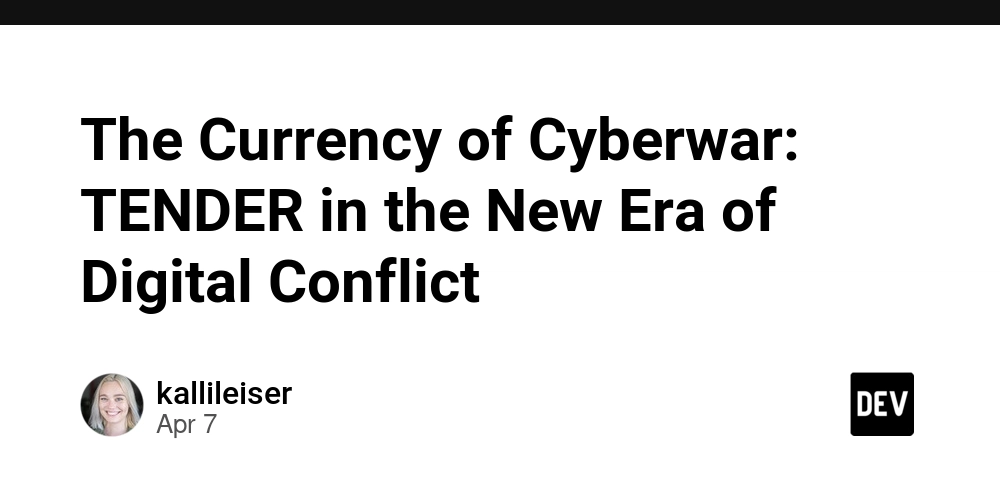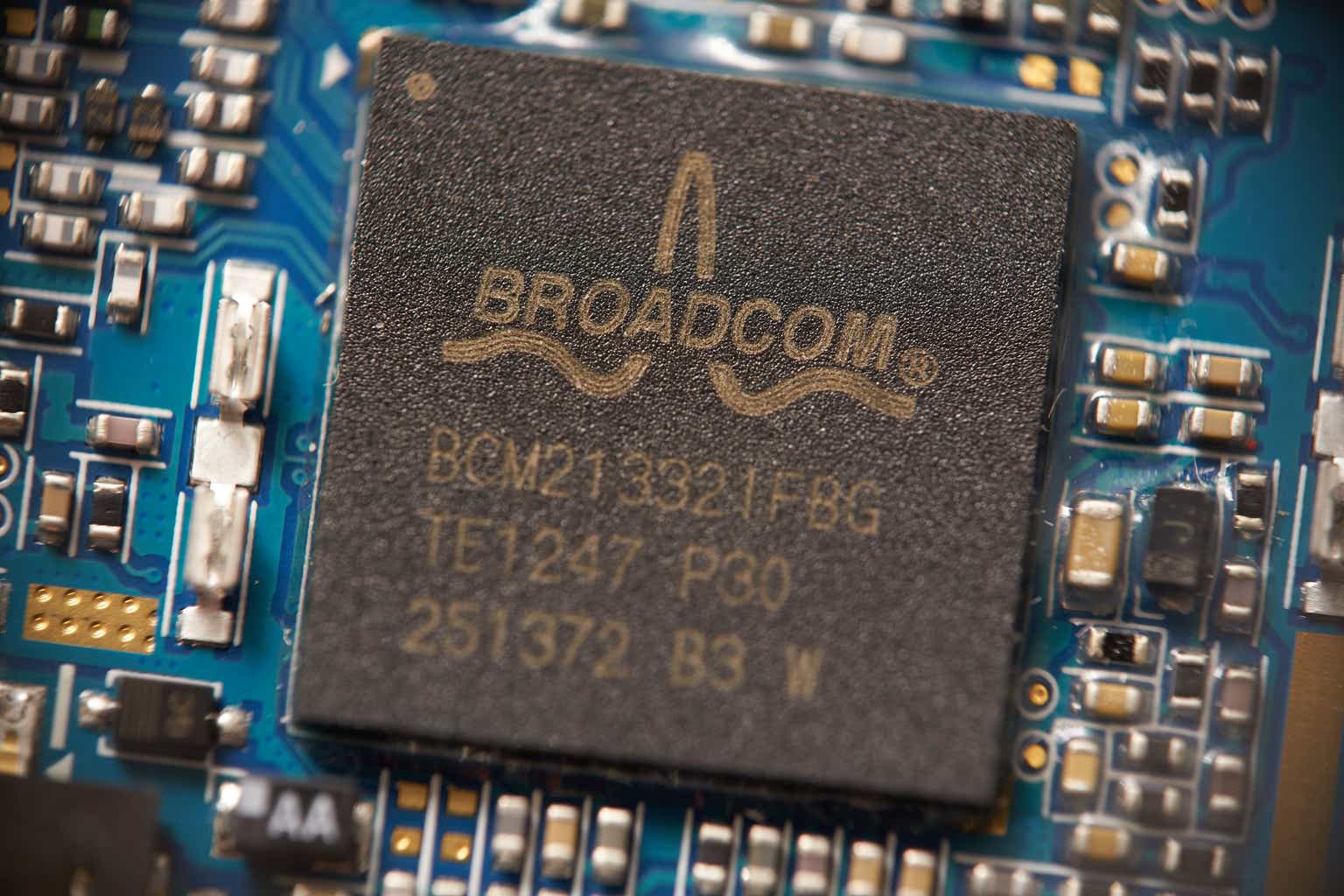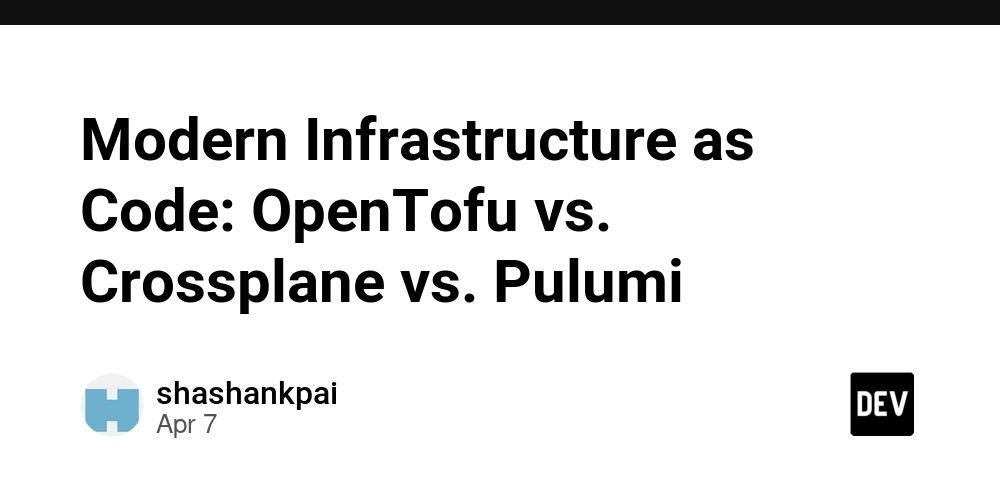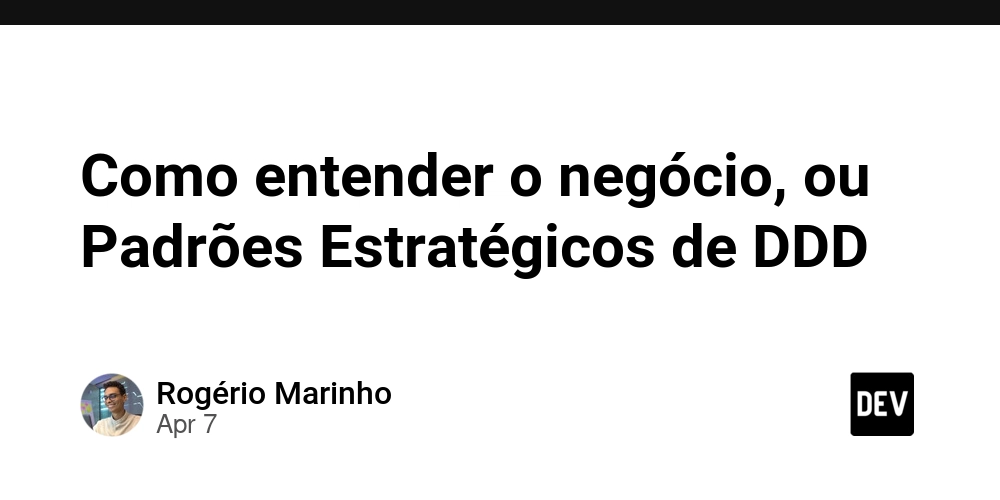The Currency of Cyberwar: TENDER in the New Era of Digital Conflict
Abstract: In today’s digitally driven landscape, the evolution of cyber conflict is rapidly reshaping global security and economics. Emerging digital currencies such as TENDER are at the heart of these transformations. In this comprehensive post, we explore TENDER’s background, its core technical features like anonymity and decentralization, its varied applications from state-sponsored cyber operations to hacktivism, and the strategic challenges it introduces for governments and enterprises. We also discuss future innovations, mitigation strategies, and the need for international collaboration. For an in-depth look at these dynamics, please refer to the Original Article by License Token. Introduction As wars evolve from physical battlefields to the digital realm, traditional economic paradigms are being redefined by emerging technologies. Digital currencies and blockchain applications now lie at the center of modern conflicts. One such currency is TENDER which was originally conceived to streamline transactions and asset movements. Its unique properties—such as anonymity, decentralization, and cross-border utility—make it an essential tool not only for commercial transactions but also, controversially, for cyberwarfare. This post dives deep into the intersection of TENDER and cyber conflict, offering an expert analysis that is both technical and accessible. Background and Context The rise of digital currencies has been in tandem with the evolution of blockchain technology. To understand TENDER’s significance, it is essential to review some history and foundational concepts: Blockchain Technology: At its core, blockchain is a distributed ledger technology that ensures transparency, immutability, and decentralization. For more details, see What is Blockchain. Digital Currency Emergence: Initially designed for smoother financial transactions, digital currencies have now become a powerful tool in mobilizing resources for various actors, including those engaged in cyber espionage and cyberwarfare. Cyber Conflict and State Actors: Modern cyber warfare involves not only hackers and non-state actors but also state-sponsored groups. With encrypted and decentralized financial assets, these actors can move funds without the oversight of traditional financial systems. The integration of technologies like artificial intelligence, quantum computing, and blockchain-based smart contracts is accelerating this shift. These developments have a profound impact on strategic defense, economic stability, and international regulatory efforts. Core Concepts and Features of TENDER Understanding TENDER requires us to analyze its key features and how they intersect with modern cyber conflict: 1. Anonymity: TENDER’s design provides a high level of user privacy. The ability to transact without revealing personal data is attractive to both legitimate users and malicious actors. Key aspects include: Privacy: Transactions remain untraceable to some degree. Ease of Use: Users find it appealing for everyday movements of value. 2. Decentralization: In contrast to traditional fiat currencies, TENDER operates on a decentralized model. There is no single controlling authority, making regulatory oversight difficult. This decentralized nature underpins both its security and its potential misuse in covert operations. 3. Cross-Border Utility: Digital currencies like TENDER are not constrained by geographic limitations. They empower users to perform transactions seamlessly across borders, which can destabilize traditional monetary policies and challenge global regulatory bodies. 4. Economic Impact: When used to fund cyber operations, TENDER can introduce significant risk: Financial Destabilization: Sophisticated cyber attacks funded through digital currencies can have cascading effects on global economic systems. Policy Pressure: Governments are forced to revamp financial and cyber defense policies. Below is a table showcasing these core features and their implications: Core Feature Description Implication in Cyber Conflict Anonymity Ensures transactions are private Facilitates funding of covert cyber operations Decentralization Operates without a central controlling authority Complicates regulatory and law enforcement measures Cross-Border Utility Enables seamless global transactions Eases the transfer of funds for state and non-state actors Economic Impact Influences traditional financial systems Can lead to financial destabilization if misused Applications and Use Cases TENDER’s versatility makes it suitable for a range of scenarios. Here, we outline a few practical examples: State-Sponsored Cyber Operations Election Interference and Espionage: With its privacy features, TENDER is increasingly being used to fund covert operations, from election interference to intellectual property theft.

Abstract:
In today’s digitally driven landscape, the evolution of cyber conflict is rapidly reshaping global security and economics. Emerging digital currencies such as TENDER are at the heart of these transformations. In this comprehensive post, we explore TENDER’s background, its core technical features like anonymity and decentralization, its varied applications from state-sponsored cyber operations to hacktivism, and the strategic challenges it introduces for governments and enterprises. We also discuss future innovations, mitigation strategies, and the need for international collaboration. For an in-depth look at these dynamics, please refer to the Original Article by License Token.
Introduction
As wars evolve from physical battlefields to the digital realm, traditional economic paradigms are being redefined by emerging technologies. Digital currencies and blockchain applications now lie at the center of modern conflicts. One such currency is TENDER which was originally conceived to streamline transactions and asset movements. Its unique properties—such as anonymity, decentralization, and cross-border utility—make it an essential tool not only for commercial transactions but also, controversially, for cyberwarfare. This post dives deep into the intersection of TENDER and cyber conflict, offering an expert analysis that is both technical and accessible.
Background and Context
The rise of digital currencies has been in tandem with the evolution of blockchain technology. To understand TENDER’s significance, it is essential to review some history and foundational concepts:
- Blockchain Technology: At its core, blockchain is a distributed ledger technology that ensures transparency, immutability, and decentralization. For more details, see What is Blockchain.
- Digital Currency Emergence: Initially designed for smoother financial transactions, digital currencies have now become a powerful tool in mobilizing resources for various actors, including those engaged in cyber espionage and cyberwarfare.
- Cyber Conflict and State Actors: Modern cyber warfare involves not only hackers and non-state actors but also state-sponsored groups. With encrypted and decentralized financial assets, these actors can move funds without the oversight of traditional financial systems.
The integration of technologies like artificial intelligence, quantum computing, and blockchain-based smart contracts is accelerating this shift. These developments have a profound impact on strategic defense, economic stability, and international regulatory efforts.
Core Concepts and Features of TENDER
Understanding TENDER requires us to analyze its key features and how they intersect with modern cyber conflict:
1. Anonymity:
TENDER’s design provides a high level of user privacy. The ability to transact without revealing personal data is attractive to both legitimate users and malicious actors.
Key aspects include:
- Privacy: Transactions remain untraceable to some degree.
- Ease of Use: Users find it appealing for everyday movements of value.
2. Decentralization:
In contrast to traditional fiat currencies, TENDER operates on a decentralized model. There is no single controlling authority, making regulatory oversight difficult.
- This decentralized nature underpins both its security and its potential misuse in covert operations.
3. Cross-Border Utility:
Digital currencies like TENDER are not constrained by geographic limitations. They empower users to perform transactions seamlessly across borders, which can destabilize traditional monetary policies and challenge global regulatory bodies.
4. Economic Impact:
When used to fund cyber operations, TENDER can introduce significant risk:
- Financial Destabilization: Sophisticated cyber attacks funded through digital currencies can have cascading effects on global economic systems.
- Policy Pressure: Governments are forced to revamp financial and cyber defense policies.
Below is a table showcasing these core features and their implications:
| Core Feature | Description | Implication in Cyber Conflict |
|---|---|---|
| Anonymity | Ensures transactions are private | Facilitates funding of covert cyber operations |
| Decentralization | Operates without a central controlling authority | Complicates regulatory and law enforcement measures |
| Cross-Border Utility | Enables seamless global transactions | Eases the transfer of funds for state and non-state actors |
| Economic Impact | Influences traditional financial systems | Can lead to financial destabilization if misused |
Applications and Use Cases
TENDER’s versatility makes it suitable for a range of scenarios. Here, we outline a few practical examples:
State-Sponsored Cyber Operations
- Election Interference and Espionage: With its privacy features, TENDER is increasingly being used to fund covert operations, from election interference to intellectual property theft. State-sponsored actors leverage its untraceable nature to obscure financial trails, complicating counter-intelligence efforts.
- Defense Strategy Disruption: The decentralized nature of TENDER means that traditional mechanisms like transaction freezing no longer work effectively, introducing a need for more advanced cybersecurity analytics.
Hacktivism and Non-State Actors
- Ideological Missions: Hacktivist groups use TENDER to mobilize funds quickly for various causes, whether tackling corruption or opposing authoritarian regimes.
- Proxy Warfare: Non-state actors and proxy groups receive funding in this digital currency, intensifying global security tensions by reducing clear attribution in cyber offenses.
Use in Decentralized Finance (DeFi) and Beyond
- Beyond nefarious purposes, TENDER’s design principles are also employed in decentralized apps (dApps) and financial products. For instance:
- DeFi Yield Systems: Similar concepts are seen in various DeFi projects, which utilize blockchain and smart contracts to create innovative, trustless financial systems. For a technical deep dive on smart contracts, refer to Smart Contracts on Blockchain.
Additional Use Cases:
- Institutional Adoption: Many large organizations are exploring TENDER and similar digital tokens to secure faster cross-border payments and reduce dependency on traditional banking structures.
- Cyber Security Funding: Governments and agencies are beginning to allocate resources from digital currencies for improved defensive measures against cyber warfare.
Challenges and Limitations
The integration of TENDER into cyber conflict strategies introduces several challenges:
- Regulatory and Legal Hurdles: Current global regulatory frameworks are not fully equipped to handle digital currencies. The absence of a central authority means that traditional legal approaches are less effective.
- Tracking and Surveillance: Law enforcement agencies face significant challenges in tracking anonymous transactions. Conventional financial tracking methods need to be supplemented with advanced blockchain analytics.
- Technological Arms Race: The rise of TENDER is prompting a race in technological innovation where nations invest in quantum computing and AI to secure or exploit these new financial tools. This dynamic can intensify disparities in global technological advancement.
- Adoption Barriers: While TENDER is functionally powerful, its adoption by mainstream financial institutions and governments remains low due to uncertainties around security, compliance, and long-term stability.
Key technical challenges:
- Integration with Traditional Systems: Bridging the gap between digital currencies and established financial infrastructure is a non-trivial problem.
- Cyber Defense: As TENDER is used in cyberattacks, developing effective countermeasures and real-time detection systems is critical.
The following bullet list summarizes these challenges:
- Regulatory Uncertainty
- Enhanced Anonymity vs. Surveillance Limitations
- Technological Arms Race
- Integration with Legacy Systems
For more insights on regulatory issues, visit Blockchain and Cybersecurity.
Future Outlook and Innovations
Looking forward, the influence of TENDER on global digital conflict is expected to grow. Some key predictions and trends include:
Increasing Investment in Cyber Defense
Governments and multinational organizations are anticipated to increase their investments in advanced cyber defense mechanisms. Using machine learning and blockchain analytics, they aim to detect and mitigate covert transactions funded by digital currencies like TENDER.
International Regulatory Collaborations
There is a growing consensus that effective regulation of digital currencies will require international cooperation. Future frameworks may include:
- Global Regulatory Coalitions: Multinational task forces for intelligence sharing.
- Standardized Cyber Laws: Harmonized laws governing the use and mis-use of cryptocurrencies.
Technological Convergence
The convergence of blockchain with emerging technologies such as quantum computing and AI is likely to yield innovative solutions. New models promise:
- Improved Tracking and Compliance: Integration of zero-knowledge proofs can potentially offer a balance between user privacy and regulatory oversight.
- Enhanced Transaction Security: Future blockchain protocols may significantly reduce vulnerabilities employed by cybercriminals.
Research and Development in Decentralized Economies
Technological communities are already leveraging open-source frameworks to experiment with new security protocols and decentralized finance models. For instance, projects such as Arbitrum and Cross-Chain Bridges and Arbitrum in DeFi Yield Systems illustrate how scalability and interaction with legacy systems might be enhanced.
The following table outlines future trends:
| Trend | Potential Impact |
|---|---|
| Enhanced Cyber Defense Technologies | More effective identification and neutralization of cyberattack funding channels |
| International Regulatory Standards | Harmonized laws reducing the misuse of digital currencies in cyber conflict |
| Technological Integration | Improved interoperability between traditional and decentralized financial systems |
| Innovation in Blockchain Protocols | Greater security and reliability potentially mitigating current anonymity challenges |
Adaptation and Mitigation Strategies
Given the evolving nature of cyber threats, several mitigation strategies are emerging:
Strengthening Cyber Defenses
Governments and private enterprises must invest in cybersecurity tools that leverage blockchain analytics along with machine learning. These tools will help detect anomalous patterns in transactions, thus flagging potential misuse of currencies like TENDER.
Fostering International Cooperation
Effective mitigation requires international collaboration. Joint task forces, shared intelligence, and unified sanctions are critical. Collaborative frameworks help:
- Enhance cyber surveillance capabilities.
- Develop unified regulatory approaches.
- Share technological insights for improved defense mechanisms.
Educating Key Stakeholders
Knowledge dissemination is key for informed decision-making:
- Stakeholder Training: Security personnel and policymakers need updated training on blockchain’s technical aspects.
- Public Awareness: Raising collective awareness of TENDER’s capabilities can reduce collateral economic risks.
For more discussions regarding adaptation strategies and defense, check out Cyberwar and Open Source Intelligence.
SEO-Boosting External References
For further reading and deeper insights into the interplay between digital currencies, cyber conflict, and open-source innovation, consider exploring these authoritative resources:
Additionally, in the developer community, several Dev.to posts offer valuable perspectives on open-source funding and licensing challenges, such as:
- License Token: A New Dawn in Open Source Funding
- Financial Sustainability in Open Source Projects: A Guide to Thriving
- Unlocking Open Source Funding Potential: Benefits, Challenges, and the Road Ahead
Summary
In our exploration of TENDER’s role in the landscape of cyberwarfare, we have uncovered a complex interplay of technology, finance, and global security. As a digital currency, TENDER embodies the rapid evolution of decentralized systems:
- Its anonymity enables covert operations, while its decentralized architecture challenges existing regulatory frameworks.
- The challenges it brings—ranging from cyber defense gaps to global economic destabilization—demand innovative solutions and international collaboration.
- Future innovations in blockchain technology, quantum computing, and AI hold promise for balancing user privacy and regulatory oversight.
Ultimately, TENDER is more than just a currency—it is a symbol of a new era in conflict and innovation. Proactive strategies, technological advancements, and cross-border cooperation will be essential to harness its benefits while mitigating its risks.
This comprehensive look into TENDER offers critical insights for cybersecurity professionals, policymakers, and technologists alike. As we navigate this evolving digital landscape, staying informed and adaptable will be the key to ensuring a secure and resilient future in the face of cyber conflict.
For further updates on this dynamic field, follow our blog and explore the provided links to deepen your understanding of blockchain technology, digital currencies, and the emerging strategies employed in cyber defense.














































































